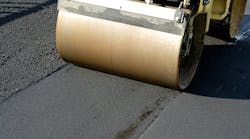About the author: Chris Estes, PLA, GC, is owner of Estes Design Inc. & Anglesy Construction. Estes can be reached at [email protected].
After more than 40 years of research documenting detrimental effects of impervious surfaces on the environment and a decade of honing our infiltration knowledge for different soil types, infiltrating pavement has become a mainstream storm water best management practice (BMP). Porous pavement has become instrumental in mitigating flooding, erosion and non-point source pollution. It eliminates the most polluted segment of the runoff volume while maintaining groundwater hydrology. However, there can be impediments to implementation.
Economic Impact
Infiltrating porous pavement has some functional and economical advantages over traditional storm water BMPs, including retrofit simplicity, dual use, low long-term maintenance costs, and infrastructure reduction or elimination. However, it can have higher upfront costs that may deter private investors.
For example, retrofitting impervious with porous pavement in urban areas will reduce infrastructure burden by mimicking predevelopment hydrology while maintaining pavement function on high-value real estate. In new development, where property values are lower and the cost savings do not tip the scale in favor of porous pavement, it may be viewed as a short-term investment loss. Impervious pavement must be bundled with storm water infrastructure when comparing costs, whereas in specific situations, porous pavement may not.
Economic impediments to porous pavement also can be compounded by regulations that do not specifically target volume reduction. These impediments are most notable in new development, specifically suburban areas where growth seems to appear overnight.
Suburban or urban sprawl increases water pollution and erosion of nearby streams regardless of traditional storm water detention practices. This has a cumulative deleterious effect on the larger watershed and has been a primary contributor to impaired water classifications. The percentage of impervious area at which degradation of water quality begins ranges from 4% to 12%. According to a 2005 study by Vladimir Novotny, et al., it is important to know the thresholds of impairment related to impervious surface to avoid impacts before the thresholds are exceeded. To do this, proactive policy and incentives are required.
Within the categories of single-family, multi-family and commercial uses, pavement occupies 66% of the built-upon area (BUA). In shopping centers, pavement occupies 65% to 70% of the BUA. The majority of this pavement—including driveways, sidewalks, local roads and parking lots—has low traffic volumes and is eligible for porous pavement.
Incentive Programs
There are five types of incentive programs used to varying degrees that encourage the use of porous pavement: development incentives, storm water fee discounts, grants, rebates and recognition programs. Two of these are rooted in regulatory policy (development incentives and fee discounts) and can be significant for both large- and small-scale development and retrofits.
Examples of development incentives include expedited and lower-cost permitting, flexible zoning allowances, and reduced storm water requirements. In North Carolina, 100% BUA credit is now given for infiltrating pavement. Other states and jurisdictions give similar BUA credits. The statutory definition of BUA is “an impervious surface that does not allow infiltration into the underlying soil,” therefore BUA credit is a pragmatic approach to incentivizing the use of porous pavement. This can be attractive to private investment as it can reduce or eliminate unusable portions of property that typically are dedicated to higher-liability BMPs.
Storm water fee discounts can be significant. Reduced utility fees can result in significant cost savings over the lifespan of porous pavement. This can encourage retrofitting existing impervious pavement, especially when pavement replacement is necessary. In new development, reduction in annual fees as well as a reduction in infrastructure cost and maintenance can mean a significant savings for both developer and owners.
As population explodes and climate change threatens, we must proactively plan the development of our watersheds. This includes targeting volume retention to the highest extent practical through policy and incentives. This undoubtedly includes making our pavement porous while utilizing every additional tool available to protect water resources. After all, where would we be without access to reliable high quality water?


